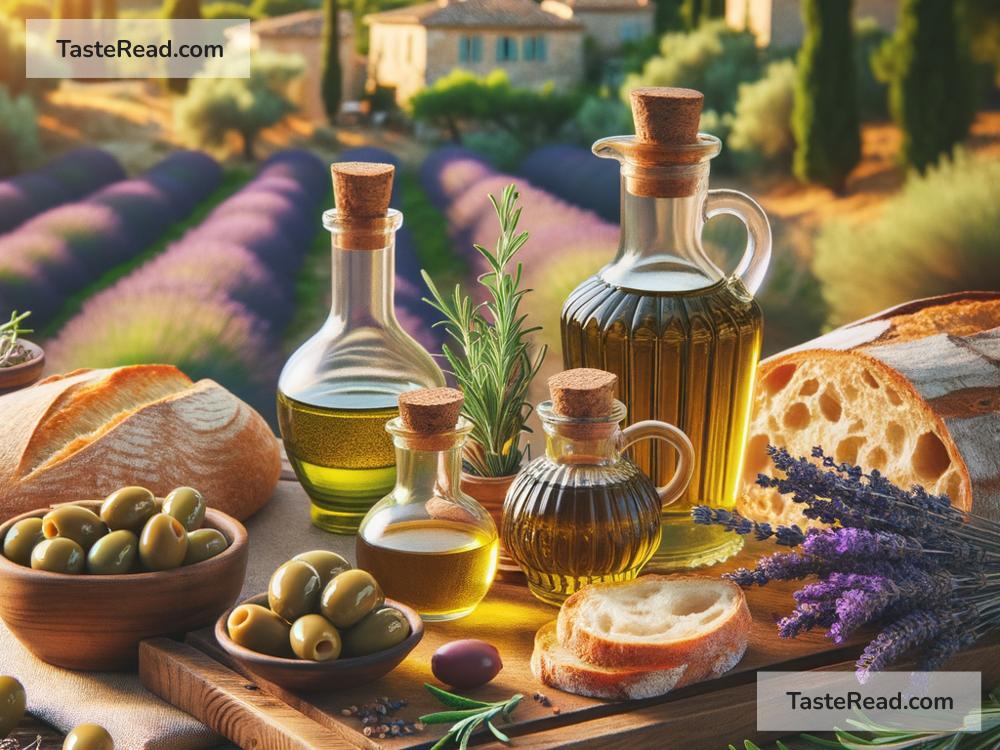Celebrating the Art of Handcrafted Olive Oils in Provence, France
In the beautiful south of France lies Provence, a region known for its breathtaking lavender fields, charming villages, and sunny Mediterranean climate. But there’s another treasure that makes this land truly special — its olive oil. The art of crafting olive oil in Provence is not just about making food; it’s about preserving tradition, honoring the land, and celebrating centuries-old craftsmanship.
A Land Rich in History
Olive trees have been growing in Provence for thousands of years. In fact, they were planted by ancient civilizations like the Greeks and Romans who realized the land’s potential for producing high-quality olives. Over time, olive oil became a symbol of Provence’s rich agricultural heritage and a staple of its cuisine. It is used not only for cooking but also as a dipping oil for bread, a base for sauces, and even in beauty products.
Today, Provence remains one of the most famous regions for olive oil in the world, and every bottle tells a story of the land, the weather, and the people who care for the trees throughout the seasons.
What Makes Provençal Olive Oil Special?
Handcrafted olive oil from Provence is not just any oil — it’s something truly extraordinary. First, the region’s warm and sunny climate allows the olive trees to thrive. Their fruits naturally develop a rich, complex flavor.
Second, the way olives are grown, harvested, and processed in Provence makes all the difference. Small, family-owned farms still rely on traditional methods that prioritize quality over quantity. The olives are carefully hand-picked at the right time to make sure they are at their peak ripeness. This prevents bruising, which can affect the taste of the oil.
But the magic doesn’t stop there! After harvesting, the olives are cold-pressed to extract their oil without using heat or chemicals. This method preserves the flavor, aroma, and health benefits of the oil. The result is pure, golden olive oil with a taste that reflects the unique terroir of Provence.
The Varieties of Olive Oil
Olive oil is as diverse as wine. In Provence, different olive varieties and processing methods create oils with unique flavors. Some oils are smooth and buttery, while others are peppery or fruity with hints of green herbs and nuts.
The Label Rouge certification distinguishes high-quality olive oil in Provence. This mark ensures that the oil meets strict standards of taste, authenticity, and craftsmanship. When you see this label on a bottle, you know you’re holding something truly exceptional.
In addition, Provence produces single-variety olive oils, made using just one type of olive. These oils highlight the specific characteristics of that variety, offering olive oil lovers a unique taste experience.
The Olive Harvest: A Time of Celebration
In Provence, the olive harvest is more than just farm work — it’s a festive season that brings communities together. Typically starting in November and lasting through early winter, farmers pick olives by hand, often involving friends and family.
Around this time, local villages celebrate with olive-themed festivals where you can taste fresh, handcrafted oils, while enjoying music, dancing, and traditional Provençal food. These events are wonderful opportunities to learn about the production process, meet the artisans, and immerse yourself in the culture of Provence.
Why Handcrafted Olive Oil Matters
Handcrafted olive oil is not just about creating amazing flavors; it’s also about supporting sustainable farming and local communities. Many olive growers in Provence follow eco-friendly practices that respect the environment. This means no artificial chemicals are used, and the trees are cared for in a way that ensures their health for generations to come.
By choosing handcrafted olive oil, you are celebrating the work and passion of small-scale farmers rather than mass-produced products. You’re also connecting with nature and savoring the authentic taste of Provence.
How to Enjoy Olive Oil from Provence
Once you’ve tried olive oil from Provence, you’ll understand why people rave about it. Its balanced and elegant flavors make it perfect for drizzling over fresh bread, mixing into salads, or adding to pasta dishes. You can even use it to enhance simple grilled vegetables and fish.
But olive oil from Provence isn’t just for food. It’s also rich in antioxidants and healthy fats, making it great for your skin and overall health. Many use it as a moisturizer or even as a hair treatment!
Visiting Provence: An Olive Oil Lover’s Dream
If you ever get the chance to visit Provence, make sure you explore its olive groves and tasting rooms. Many farms and mills offer tours where you can see the olive oil-making process, from tree to bottle. Some farmers are happy to share their secrets and passion with visitors, giving you a deeper appreciation for their craft.
Don’t forget to visit local markets and shops, where you can buy fresh olive oil to take home. There’s something special about holding a bottle that was made with love and care in the sun-soaked hills of Provence.
Conclusion
The handcrafted olive oils of Provence are more than just a kitchen staple — they are works of art. Each bottle represents history, tradition, and the dedication of skilled farmers who cherish their land.
Celebrating olive oil in Provence is about more than enjoying its incredible flavor and quality. It’s about connecting with the region’s soul, embracing sustainable practices, and recognizing the importance of preserving heritage.
So, the next time you drizzle golden olive oil over your food, remember the hands that harvested the olives, the earth that nurtured the trees, and the centuries of love and knowledge poured into every drop. Provence invites us all to slow down, savor the moment, and celebrate the timeless art of olive oil.


